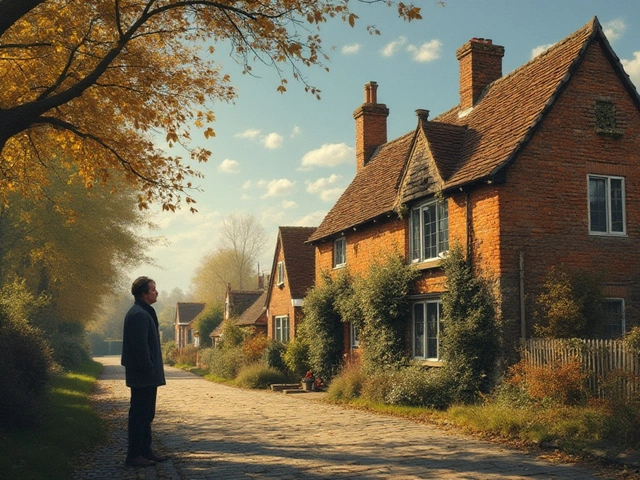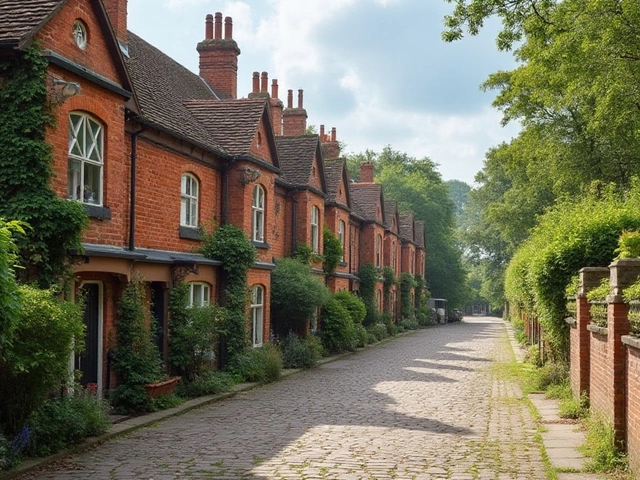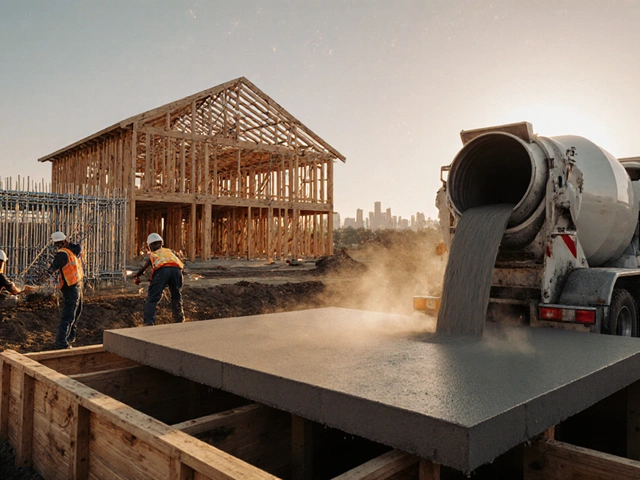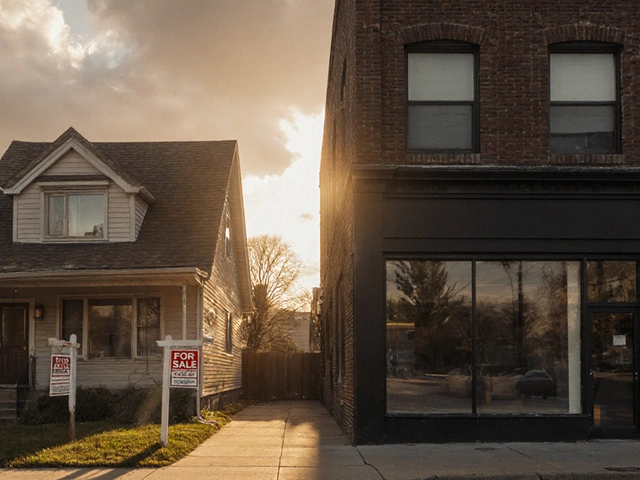Foundation Crack Severity Assessment
Assess Your Foundation Crack
Assessment Results
Horizontal foundation cracks are not the same as vertical ones. If you spot a straight, horizontal line running across your basement wall or under your exterior foundation, don’t just shrug it off. These cracks are often a sign of something much more serious than simple settling - and they need attention before they turn into a full-blown structural crisis.
What Makes Horizontal Cracks Different?
Vertical cracks are common. They happen when concrete cures and shrinks, or when the soil around your home expands and contracts with the seasons. Most vertical cracks are hairline, stay small, and don’t threaten the structure. But horizontal cracks? They’re a red flag. They form when pressure pushes against the wall from the outside - usually from soil, water, or frost heave. That pressure is trying to bend or bow the wall inward. And if the wall gives way, your home’s integrity is at risk.Think of your foundation wall like a bookshelf holding up a heavy stack of books. If the books on one side start pushing harder and harder, eventually the shelf will bend. That’s what’s happening with horizontal cracks. The soil outside your basement is the stack of books. And if it’s wet, clay-heavy, or frozen, it’s pushing with a lot more force than you realize.
When Should You Worry?
Not every horizontal crack means your house is collapsing. But size and shape matter. A crack under 1/8 inch wide might be early-stage stress. It’s still a warning, but it could be managed with drainage fixes. Anything wider than 1/4 inch? That’s a red zone. Cracks that are wider at the top than the bottom? That’s a classic sign of outward bowing - and it’s getting worse. If you can fit a credit card into the crack, you’re looking at serious structural movement.Look for other signs too. Are doors sticking? Are windows jamming? Do you see diagonal cracks near corners? Is the floor sloping? These aren’t random annoyances. They’re symptoms of the same problem: your foundation is shifting under pressure. In Halifax, where frost cycles and heavy clay soils are common, this isn’t rare. It’s a seasonal risk that snows up over time.
Why Soil and Water Are the Real Culprits
Most horizontal cracks start because of water. Rain, snowmelt, or poor drainage saturates the soil around your foundation. Wet clay can swell up to 20% in volume. That’s like adding a whole extra layer of dirt pressing against your wall. Over years, that constant pressure causes cracks to form - and grow.In Halifax, the ground freezes deep in winter. When water in the soil turns to ice, it expands. That’s called frost heave. When spring comes and the ice melts, the soil settles unevenly. This cycle repeats every year. Over 10 or 15 years, that’s enough to push a basement wall inward by an inch or more. You won’t notice it day to day. But one winter, you’ll open your basement door and see a new crack - and it’s wider than last year.
Improper grading is another big cause. If your yard slopes toward the house, water flows right into the foundation. Gutters that dump water too close to the walls make it worse. Even a small 2% slope toward your home can send hundreds of gallons of water into the soil each season.

What Happens If You Ignore It?
Ignoring horizontal cracks is like ignoring a slow leak in your roof. At first, it’s just a stain. Then the drywall sags. Then the ceiling collapses. With foundation cracks, the damage is slower but just as irreversible.Left untreated, a horizontal crack can lead to:
- Bowing walls that eventually buckle inward
- Structural instability in floors and walls above
- Water intrusion that leads to mold and rot
- Significant drop in home value - buyers walk away from homes with known foundation issues
- Costs that jump from $2,000 for drainage fixes to $20,000+ for wall replacement
One homeowner in Dartmouth waited two years to fix a 3/8-inch crack. When he finally called a contractor, the wall had bowed 1.5 inches inward. The repair wasn’t just a crack seal - it required steel beams, carbon fiber straps, and a complete drainage overhaul. Total cost: $27,000. He could’ve fixed it for $3,500 if he’d acted sooner.
How to Tell If It’s Fixable - Or Beyond Repair
The good news? Most horizontal cracks can be fixed - if caught early. Here’s how to know where you stand:- Minor (under 1/8 inch, straight, no bowing): Likely caused by hydrostatic pressure. Fix with exterior drainage, proper grading, and maybe interior carbon fiber strips.
- Moderate (1/8 to 1/4 inch, slight bowing): Needs professional assessment. Carbon fiber or steel I-beams are often used to stabilize the wall.
- Severe (over 1/4 inch, visible bowing, cracks at corners): The wall may need to be partially or fully replaced. This is expensive and disruptive, but necessary to prevent collapse.
There’s no DIY fix for bowed walls. Epoxy injections won’t work here - they’re for sealing vertical cracks, not stopping movement. Carbon fiber straps can help with minor bowing, but they’re a reinforcement, not a cure. The real fix is removing the pressure - and that means fixing the soil and water.
What the Fix Usually Involves
A professional foundation repair in Halifax typically starts with a site inspection. They’ll check:- Soil type (clay? sand?)
- Drainage around the home
- Depth of frost penetration
- Condition of gutters and downspouts
- Existing cracks and wall movement over time
Common solutions include:
- Exterior drainage systems: Installing French drains or perimeter footing drains to redirect water away from the foundation.
- Interior weeping tiles: Installed along the inside base of the wall to collect water before it reaches the concrete.
- Carbon fiber straps: Bonded to the wall surface to prevent further movement. Often used with epoxy.
- Steel I-beams: Installed vertically along the wall to hold it in place. Used when bowing is more than 1 inch.
- Wall replacement: Only if the wall is cracked beyond repair. Involves shoring up the house, digging out the soil, and pouring a new wall.
Most repairs take 1-3 days. Costs range from $2,000 for drainage upgrades to $25,000 for full wall replacement. Insurance rarely covers foundation damage unless it’s tied to a sudden event like a burst pipe. Most homeowners pay out of pocket - which is why early action saves money.

Prevention Is Cheaper Than Repair
The best fix is the one you never need. Here’s how to protect your foundation:- Keep gutters clean and extend downspouts at least 6 feet from the house.
- Grade your yard so it slopes away from the foundation - at least 1 inch per foot for the first 6 feet.
- Don’t plant trees or large shrubs closer than 10 feet from the foundation. Roots dry out soil and cause uneven settling.
- Check your basement walls once a year - especially after heavy rain or snowmelt.
- Install a sump pump if you don’t have one. It’s not expensive, and it can save you thousands.
In Halifax, where winters are long and wet, these steps aren’t optional. They’re basic home maintenance - like changing your oil or replacing furnace filters.
What to Do Right Now
If you see a horizontal crack:- Measure it. Use a ruler or caliper. Write down the width and location.
- Take a photo. Date it. Do this every 3 months to track changes.
- Check your gutters and yard slope. Fix obvious drainage issues.
- Call a licensed foundation specialist. Don’t wait for it to get worse.
Most reputable contractors offer free inspections. They’ll give you a report with photos, measurements, and options. Don’t feel pressured to sign a contract on the spot. Get two or three quotes. Ask for references from local homeowners.
Remember: horizontal cracks don’t heal. They don’t disappear. And they don’t get better with time. They only get worse - and so does the price tag.
Are horizontal foundation cracks always serious?
Not always - but they’re always a warning. Hairline horizontal cracks under 1/8 inch may be from minor soil pressure and can be fixed with drainage improvements. But any crack wider than 1/4 inch, especially if the wall is bowing, is a structural issue that needs professional repair. Ignoring it risks costly damage later.
Can I fix horizontal foundation cracks myself?
You can fix the causes - like cleaning gutters, improving drainage, or regrading your yard - but you cannot fix the crack itself without professional tools. Epoxy or sealants won’t stop a wall from bowing. Carbon fiber straps can help with minor movement, but they require proper surface prep and installation. For any crack over 1/8 inch, it’s best to get a licensed contractor involved.
Do horizontal cracks mean my house is unsafe?
Not immediately - but they can lead to unsafe conditions if ignored. A slightly bowed wall might not collapse right away, but over time, it can cause floors to sag, walls to crack above, or doors to jam. In extreme cases, the wall can fail completely. If you see more than 1 inch of inward bowing, your home’s structural integrity is compromised.
Will homeowners insurance cover horizontal foundation cracks?
Almost never. Most policies exclude damage from gradual settling, soil pressure, or water seepage - which are the main causes of horizontal cracks. Insurance might cover a crack if it’s caused by a sudden event like a burst pipe or a tree falling on the house. But routine foundation issues are considered maintenance, not covered perils.
How long does it take for a horizontal crack to get worse?
It depends on the pressure. In areas with heavy clay soil and frequent freeze-thaw cycles - like Halifax - a crack can widen noticeably in 1-3 years. If the soil stays wet or drainage is poor, it could take just months. That’s why tracking changes with photos and measurements every few months is critical. The longer you wait, the more expensive and invasive the repair becomes.







